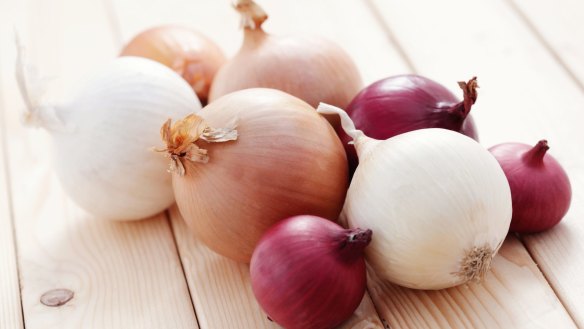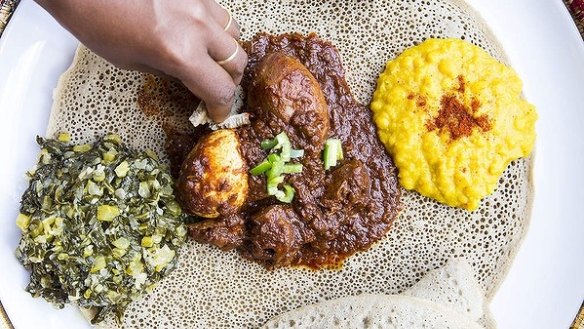How to take the sting out of onions

Why are some onions more powerful than others? P. Matzner
Just like taxi cabs, some onions smell more than others. The odour, or as I prefer to call it, the aroma of onions comes from the sulphur they draw from the soil. The onion uses the sulphur to protect itself from underground assailants such as insects and nematodes. When they breach the skin and chew through the flesh the enzymes in the onion change the sulphur into a compound that is very irritating. This is the stuff that makes you cry when you chop onions. The longer onions have been stored, the more sulphur-containing compounds develop. So the new season's onions that are coming onto the market now should be milder. If you do not like the aroma of onions permeating the kitchen after you have chopped them you can put them in a colander and rinse them under quite warm water. This speeds up the enzymatic reaction and washes away the aromatic compounds. About a minute does the trick and doesn't affect the texture of the onions, but the flavour will be much less pungent and therefore slightly sweeter. Allow to drain and pat dry well before cooking or serving.
I was wondering if you could tell me what teff is and where I can get it? A. Hoogenboom

Every wave of immigrants has influenced the way we eat. It was Italian food such as pasta and salami in the 1950s, the Greeks introduced us to souvlaki in the late 1960s and Vietnamese in the 1970s brought pho. The newest Australians are introducing us to African food. Teff is Eragrostis tef, a grass native to Ethiopia with fine seeds that are ground into a flour for porridge. It is also made into a batter that is fermented to make the delicious and nutritious flatbread called injera. For those who haven't eaten injera, it is somewhere in texture between a crumpet and a pancake, and is eaten from Ethiopia to Somalia. Injera is torn and used to pick up morsels of spicy dishes made from meat such as lamb or goat and vegetables such as okra and pulses. Teff is available from African food stores, bulk food stores and co-ops, health food stores and supermarkets.
What is the difference between a porterhouse steak and a sirloin? L. Haggerty
The Murray River. They are the same cut of beef from the rear of the animal but have different names in different states, with the Victorians preferring the old-fashioned "porterhouse". A porterhouse was an 18th-century steak house or chop house where porter beer was served alongside what we would now call a T-bone steak.
Letters
Recently we were discussing the difference in spelling between steak tartare and tartar (or tartare) sauce. M. Plutte wrote in saying, "I think the confusion of the spelling of tartar sauce originates with the French spelling. La sauce is a feminine noun and as such has an "e" on the end, as in sauce tartare, bearnaise and hollandaise. Le boeuf, or steak in English, is a masculine noun without the end "e", thus boeuf tartar. In English there is no distinction of the gender of nouns, so strictly speaking the correct spelling in English is tartar."
Send your vexing culinary conundrums to brainfood@richardcornish.com.au or tweet to @realbrainfood.
Appears in these collections
- More:
- Food
- Brain food
